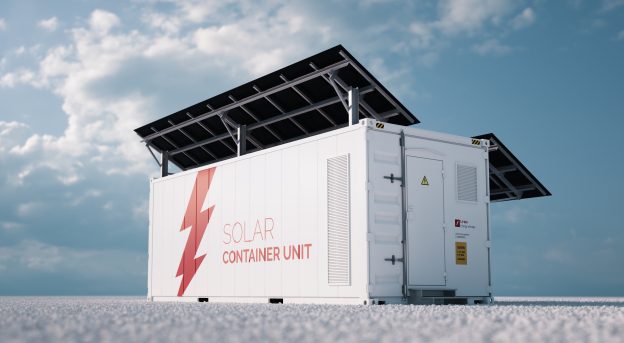The Renewable Energy and Energy Efficiency Organization of the Iranian government (also known as SATBA) announced in late December last year that the country’s first c-Si PV cell production line is ready for business. Located in the city of Khomeini in western Iran, this PV cell production line has an annual production capacity of 150MW. The production line is operated by Mana Energy Pak, a PV product manufacturer headquartered in Tehran. An inauguration ceremony for the production line was held on December 23 last year and attended by government officials including Ali Akbar Mehrabian, Iran’s Minister of Energy. This story was first reported by Iranian news outlets and other renewable energy news websites.
In his remark at the inaugural ceremony, the Iranian Energy Minister said that this cell production facility will be collaborating closely with other renewable energy companies, thereby allowing Iran to set higher renewable energy targets in the future. The Minister also said that he pledges full support for the development of a domestic solar industry because he believes that renewable energy is the solution to the problems related to the consumption of fossil fuels, such as water wastage and air pollution.
Mana Energy Pak’s own website stated that it acquired a 250MW PV module production line near Khomeini in early 2020. It has also acquired a facility that is capable of producing 1.2GW of multi-Si and mono-Si wafers every year. However, the exact location of the wafer facility has yet to be revealed. SATBA stated that Mana Energy Pak’s module production site will expand to 1.5GW by the end of next year.
Iran Has Potential to Develop a Domestic Solar Industry
While some news outlets reported that the cell production line in Khomeini is the first in Iran and the wider Middle East, it should be noted that Turkey has already set up production capacity for cells and modules. Presently, almost all countries in the Middle East and North Africa are pursuing the development of renewable energy projects as well as the development of local manufacturing for renewable energy technologies. So far, these countries have managed to set up facilities for assembling renewable generation systems, but there is still a lot of room for growth with respect to the production of key components and upstream materials.
Oil and gas remain dominant in Iran’s energy mix. According to publicly available information, Iran set a renewable energy target of 5GW (excluding large hydropower projects) in its Sixth Development Plan for 2017-2021. Iran also previously aimed to have renewables account for 5% of its energy generation by 2021, but the country failed to reach this target. Iran is a signatory of the Paris Agreement, but its government has stated that its climate pledge cannot be fulfilled unless the ongoing international economic sanctions on the country is lifted. In November last year, SATBA issued a call for proposals for setting up at least 10GW of renewable generation capacity during the next four years. Also, it has set a new target of raising the domestic renewable generation capacity by more than 50% to 1.4GW by the summer of 2022. More than 80GW of proposals had been submitted by December last year.







